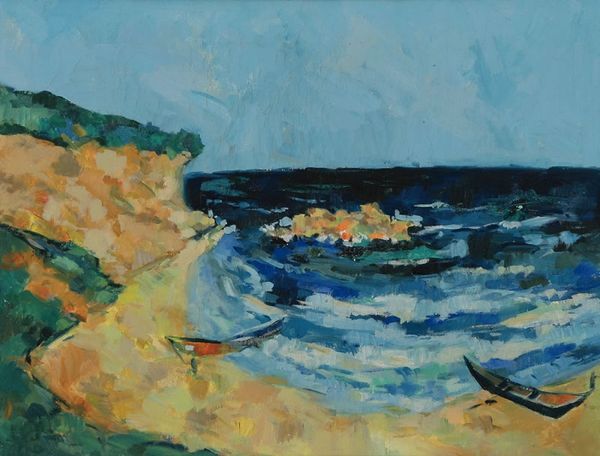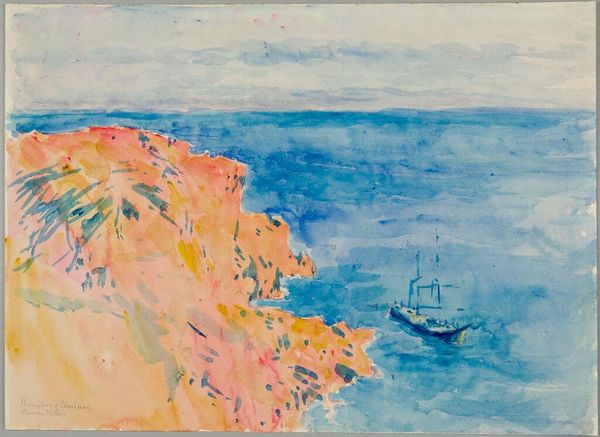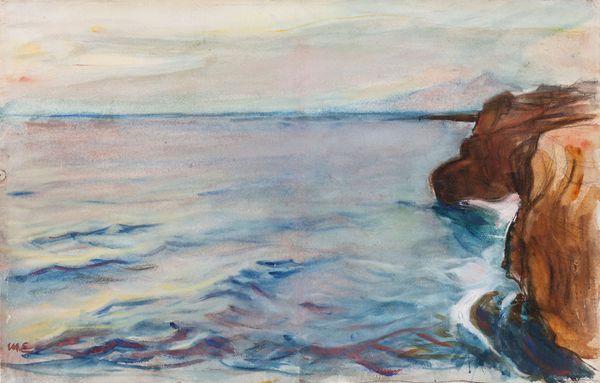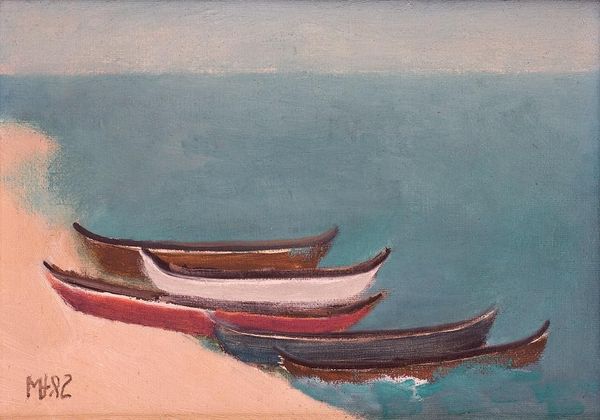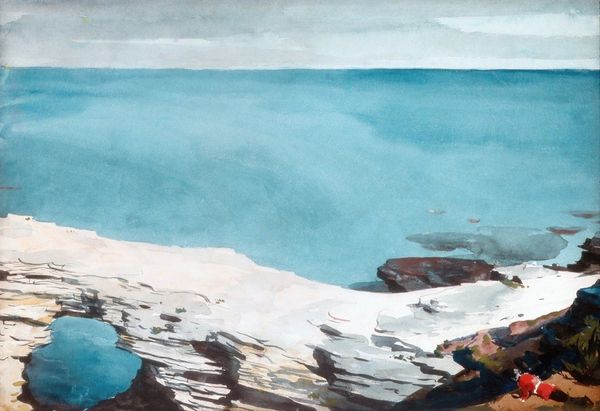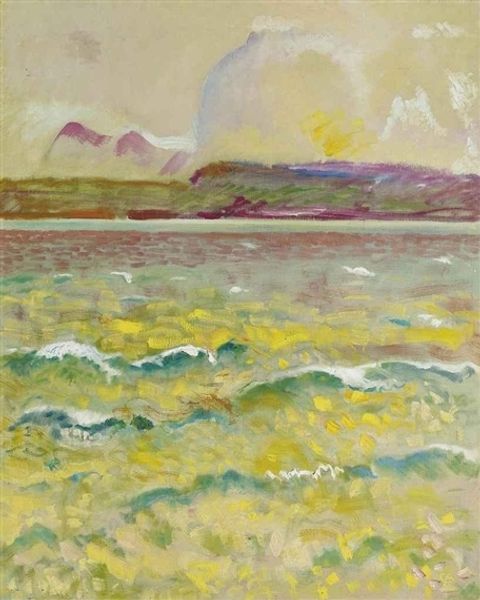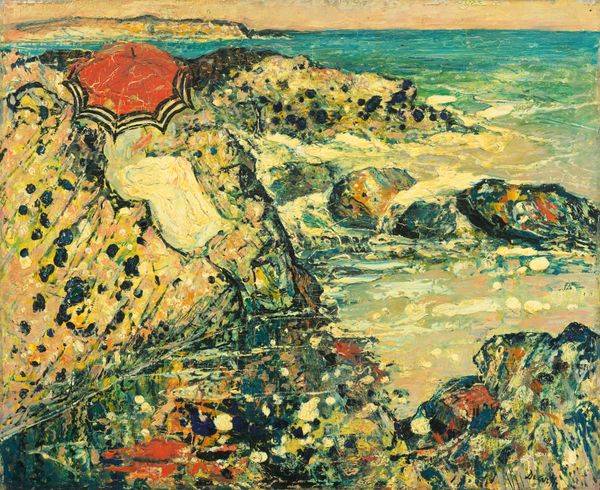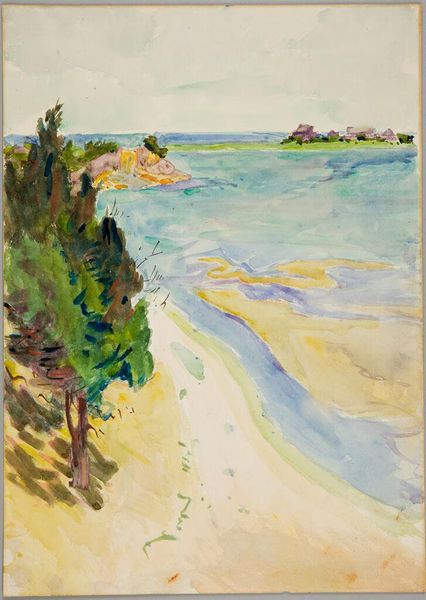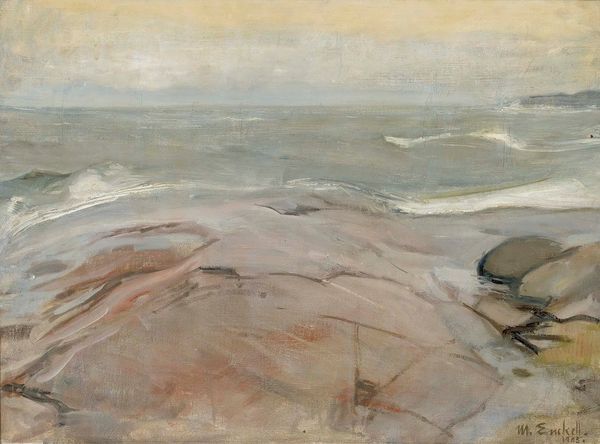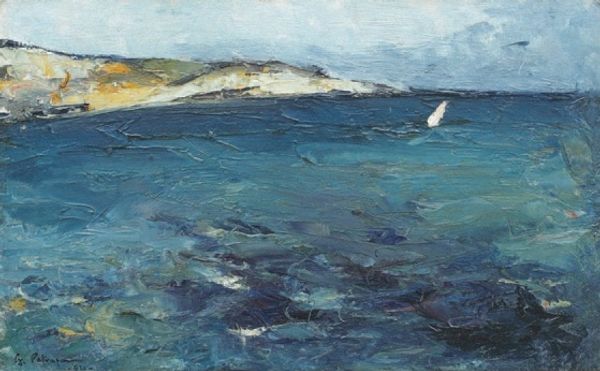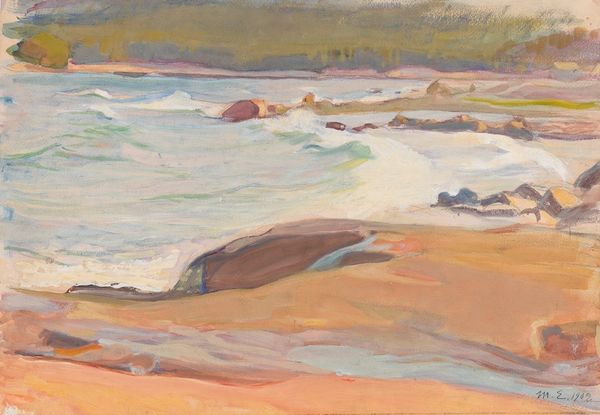
Copyright: Viorel Marginean,Fair Use
Editor: Here we have Viorel Marginean's "Barges on the Shore," a watercolor painting from 1980. I'm really struck by the peaceful, almost nostalgic mood it evokes with its soft colors and simple composition. How do you interpret this work, particularly in the context of its time? Curator: The tranquility you observe is certainly a key element. Thinking about 1980 in Romania, we must remember the socio-political context. The late communist period was marked by increasing economic hardship and political repression. Art offered a space for subtle commentary and escapism. Landscapes, particularly those devoid of overt political symbols, were often implicitly embraced as offering a vision of unspoiled beauty beyond the reach of state control. Editor: That's fascinating. So, the choice of a seemingly innocuous subject like barges on a shore could be read as a quiet act of resistance? Curator: Precisely. The Impressionistic style, with its emphasis on light and fleeting moments, also sidestepped the rigid dictates of Socialist Realism. Consider, too, the watercolor medium. It lends itself to capturing ephemeral qualities and can be seen as a reaction against the monumental, propagandistic art favored by the regime. Do you think the relative simplicity of the painting style enhances or detracts from its potential political undercurrent? Editor: I think it definitely enhances it. The subtle nature of the watercolor technique complements the nuanced act of resistance that you’re describing, it allowed Marginean to create beauty without making explicit statements, I see the clever tension between reality and implied meanings. I now view its lightness in a different way! Curator: Exactly! These understated artistic choices fostered a space where viewers could find respite and subtle critiques within an increasingly controlled environment. So what might this landscape say to a contemporary viewer disconnected from the political nuances? Editor: Well, I think the sense of calm and escape would still resonate, but with a deeper understanding of its historical background, it gains a whole new layer of meaning and appreciation. Curator: Indeed. Examining art through a historical lens transforms our understanding, offering insight not only into the artist's vision but also the complex social and political landscape in which they operated.
Comments
No comments
Be the first to comment and join the conversation on the ultimate creative platform.
